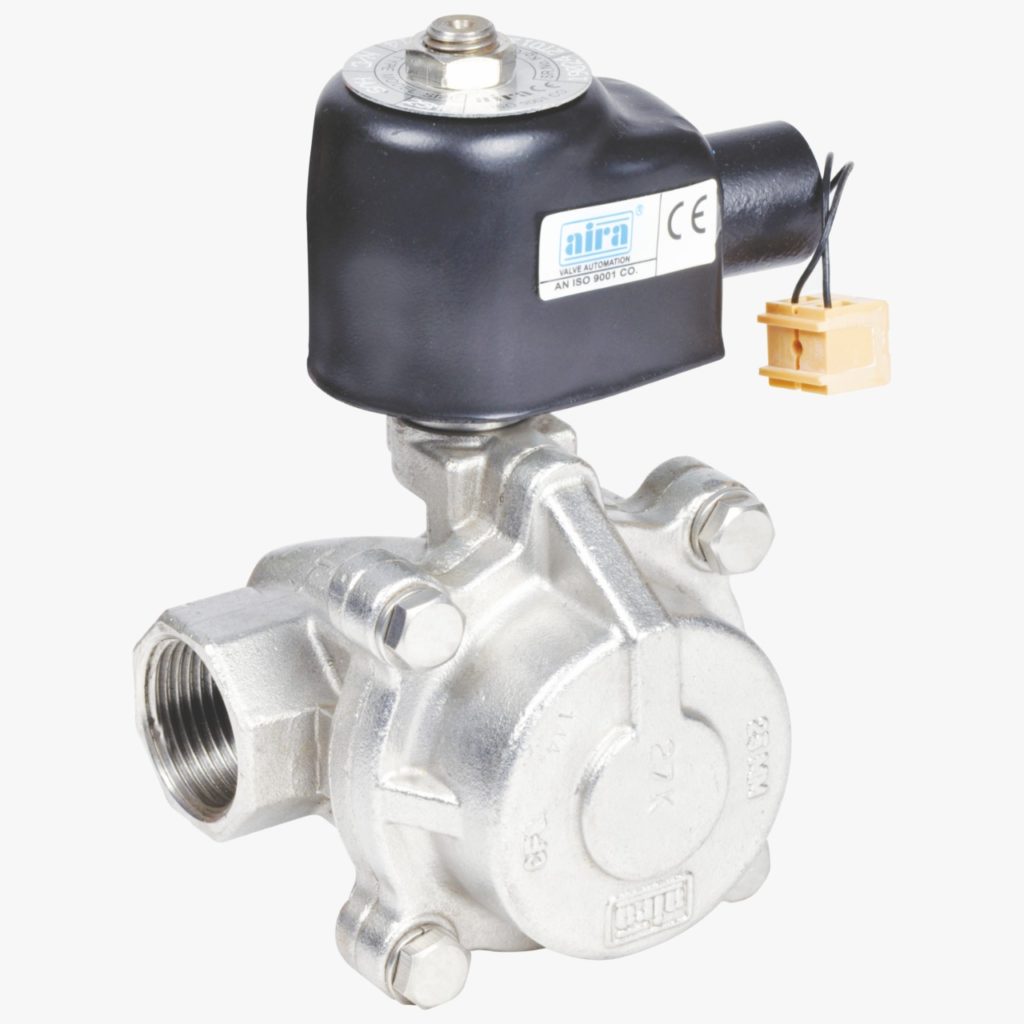In this article, we brought the details of the most popular and very useful industrial device and that is an Electric Solenoid valve. These Solenoid valves based on electricity however pneumatic solenoid valves are available in the market but we are going to explore electronically operated solenoid valves.

Solenoid Valve
The solenoid is a coil which is an electric conductor wire with a counted and controlled number of turns according to its voltage. Whenever this winded wire energizes with its positive and negative ends, it generates an electromagnetic field around it.
In the solenoid valve, we put a plunger in the middle of the coil, hence whenever we energize the coil with electricity the plunger attracts towards the coil and the valve opens up. when de-energized the coil, the plunger set back to its original position with the help of a spring, and the valve shuts off.
Types of Solenoid Valve
There are so many types of solenoid valves that have been designed by the engineers as per the uses and requirements. Here we will discuss a few basic types and designs of the solenoid valves. The solenoid valves’ main purpose is to control the rate of flow of media. The rate of flow would be set in the program that called the PLC unit. This unit energizes the solenoid coil as per the program and the valve acts as directed by the PLC unit.
1) Direct Acting Solenoid Valve:
In this valve, there is a flow of current energized the coil and the plunger attracts towards the coil, and when the coil de-energizes, the plunger set back to its original position, and then no further procedure required.
2) InDirect Acting or Pilot Operated Solenoid Valve:
This type of valve works based on the pressure of the media. There is a pressurized diaphragm that stops the flow of fluid. It requires a 0.5Kg pressure differential to pass the diaphragm. So when it needs to allow the fluid to pass away, the diaphragm de-pressurized with the help of a solenoid coil, and flow can pass through easily. It is slow in performance but electricity efficient solenoid valve.
3) Semi – lift Diaphragm Solenoid Valve:
This valve refers to the principles of Direct and Indirect solenoid valves. The diaphragm in the valve is lifted not only by the plunger but also by the pressure differential. When the Coil is energized, the plunger moves up, some amount of the fluid passes through the valve, and then when the coil is de-energized the plunger sets down to shut off the fluid.
4) Two-way Solenoid Valve:
This is the most common type of solenoid valve it has two ports one is an inlet port and the other one outlet port.
5) Three-way Solenoid Valve
In this valve, there are three ports available one is an inlet and two outlet ports in a three-way solenoid valve. These types of valves are designed and adjusted by their usage.
6) NO & NC Solenoid Valve
The NO is a Normally Open condition valve, it requires power to close and the NC is a Normally Closed condition valve and it requires power to open up.
Selection of Solenoid Valve
During the selection of correct appropriate solenoid valves, we have to keep a few points in our minds.
- First of all, we have to know which types of media can be controlled? Solenoid valves mostly control all liquid types of materials even they can carry steam and compressed air. Generally, Solenoid valves are designed to control the media without solid particles.
- The second thing is to identify which type of materials has been used to make this valve, because if we have to use it for high temperature materials then we can’t go with plastic base materials. And if we have to control chemicals so we have to choose plastic based solenoid valves.
- As we see there are normally open and normally closed solenoid valves available so we can choose one of them depends on our process and requirement.
- The most important thing is solenoid valves are subject to other standards such as ATEX, CE, CCEO, and ISO 3000 standards.